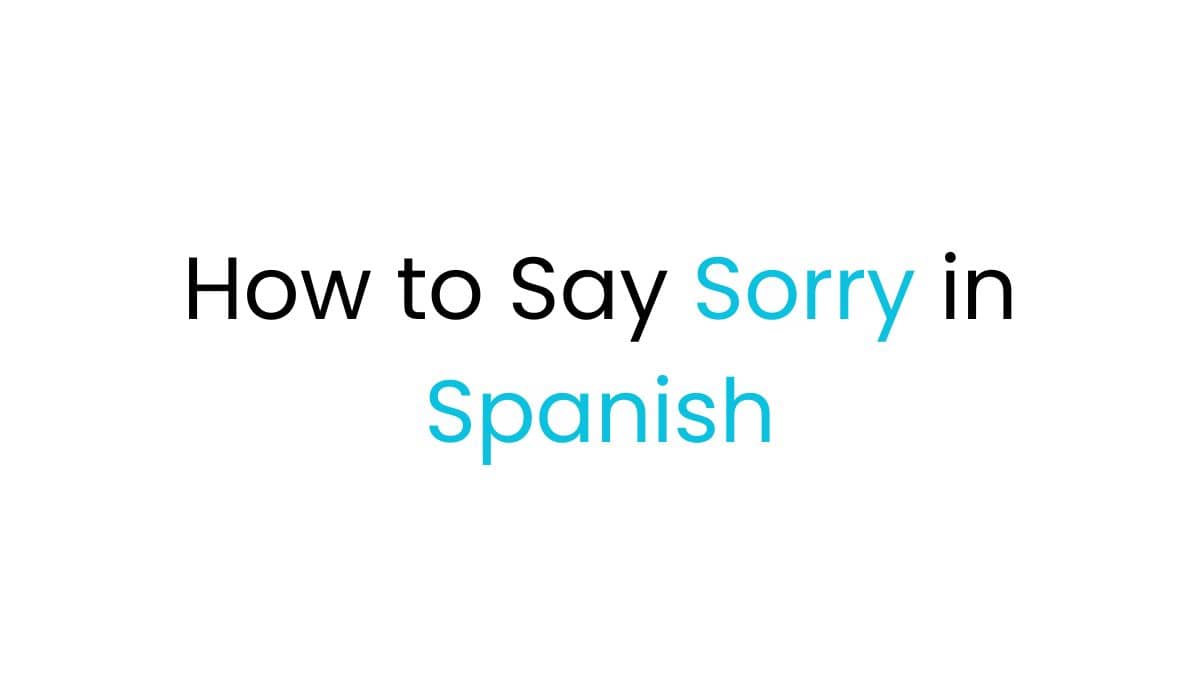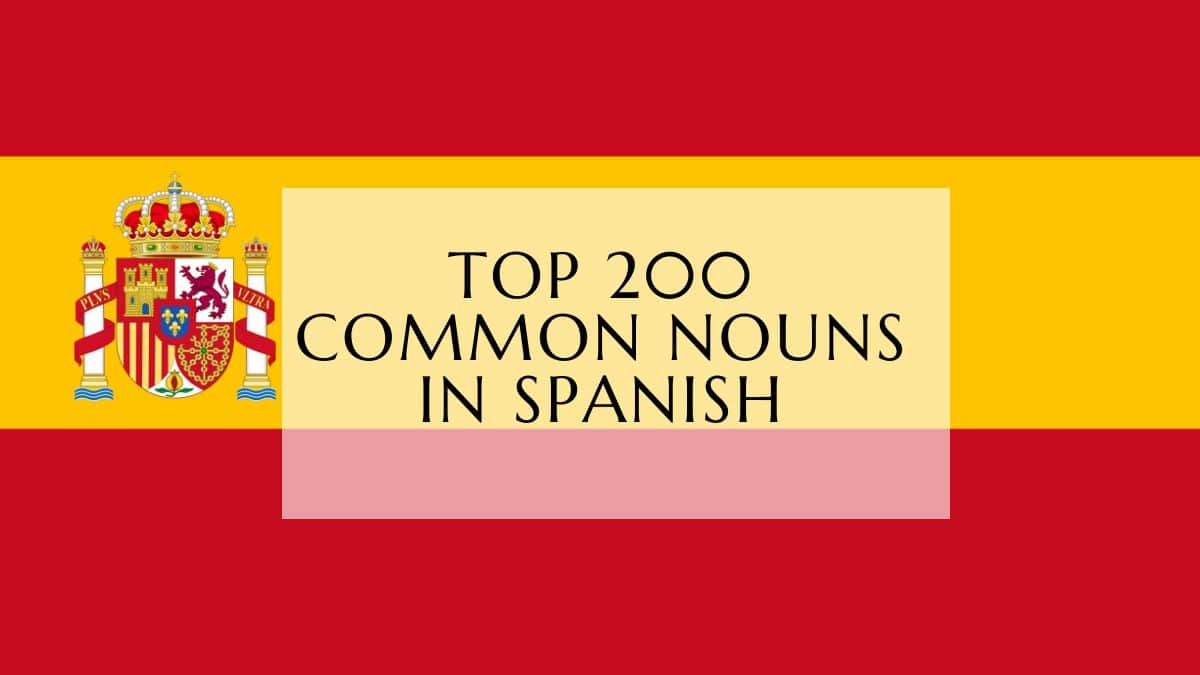Making mistakes is something we all do, which is why learning to apologize is crucial. You might need to say you’re sorry for many reasons, like when someone has passed away or when you need to get through a crowd. Just as there are different ways to apologize in English, there are many ways to say “sorry” in Spanish too. You might know the basics like “perdón” and “lo siento”. But this article will explore more situations and phrases you can use in each one.

Common Ways to Say “I’m Sorry” in Spanish
In Spanish, there are many ways to say “I’m sorry.” You can say “(yo) lo siento,” “perdón,” “perdona,” or “disculpa.” It’s important to know these expressions to communicate well in Spanish.
Perdón (Pardon/Excuse me)
Perdón is a common way to say “sorry” in Spanish. You can use it for many situations, like bumping into someone or dropping something. You can also say perdóname to ask for forgiveness.
Lo siento (I’m sorry)
Lo siento is another way to say “I’m sorry” in Spanish. It shows regret for someone’s loss or deeper regret for serious situations. Adding tanto, mucho, or de verdad makes the apology more sincere.
“No sabes cuánto lo siento” – “You have no idea how sorry I am.”
The verb sentir means “to be sorry” and is used to express regret. Saying Siento… followed by different words can show you’re sorry or regretful.
Formal Apologies in Spanish
When you need to say sorry in Spanish, there are formal phrases that show deep regret. One key phrase is “Te/Le pido disculpas” (I apologize/I ask for your forgiveness). The “Te” version is for friends, and the “Le” version is for elders or those you respect more.
For a deeper apology, try “Te pido disculpas de corazón” (I sincerely apologize). This shows you’re truly sorry from your heart. It’s more than just saying “lo siento” (I’m sorry).
But remember, saying “Te/Le debo disculpas” (I owe you an apology) doesn’t always mean you’re truly sorry. It says you need to apologize, but it’s not as strong as the other phrases. The “Te” version is for friends, and the “Le” version is for those you respect more.
Choosing how to apologize in Spanish depends on the situation and your relationship with the person. Knowing these differences helps you apologize in a way that’s right and meaningful.
Saying “Excuse Me” in Spanish
Learning to say “excuse me” in Spanish is useful in crowded places or when you need to interrupt. There are several ways to express this, each with its own level of formality.
Perdona/Perdone (Excuse me)
Perdón is a common way to say “excuse me” in Spanish. It’s used to get someone’s attention, ask them to move, or interrupt a conversation politely. Perdona and perdone are the informal and formal versions, used in similar situations.
Con permiso (Excuse me/May I?)
Con permiso means “with permission” and is used to ask politely to pass by someone or interrupt a conversation. This phrase is popular in Latin America and Spain. It shows respect and consideration for the other person.
Expressions like un momento (hold on a second), ¿cómo? (excuse me?), and disculpa/disculpe (pardon me) can also be used to say “excuse me” in Spanish. The choice depends on the situation and how formal you want to be.
“Perdón” is the most common way to say “excuse me” in Spanish for small apologies and interruptions. It is slightly more informal compared to other expressions.
Knowing these ways to say “excuse me” in Spanish helps you talk and act more smoothly with Spanish speakers. It shows respect and thoughtfulness towards them.
Sorry in spanish Expressions for Empathy
In Spanish, saying “lo siento” or “lamento lo ocurrido” shows empathy. It means “I’m sorry about what happened.” This lets you express concern and sympathy without taking blame.
Using “lo siento mucho/tanto” shows you deeply care about the person’s trouble. Phrases like “No sabes cuánto lo siento” and “¡Cuánto lo siento!” highlight your deep empathy.
These apologies in Spanish aren’t about saying you’re wrong. They’re about showing you get how hard it is for the other person. They show you want to help and support them in tough times.
Accepting Apologies in Spanish
When someone apologizes to you in Spanish, knowing how to accept it is key. Saying “Te perdono” (I forgive you) or “Estás perdonado” (You’re forgiven) is a simple way to do this. These phrases show you’ve forgiven them and there’s no hard feelings.
If the issue was minor and it didn’t upset you much, you can say “No pasa nada” (Don’t worry about it) or “No hay problema” (No problem). These say you accept the apology and don’t want the person to feel bad. Saying “Gracias por disculparte” (Thank you for apologizing) also shows you value their apology.
| Spanish Phrase | English Translation | Formality Level |
| Te perdono | I forgive you | Formal/Informal |
| Estás perdonado | You’re forgiven | Formal/Informal |
| No pasa nada | Don’t worry about it | Informal |
| No hay problema | No problem | Informal |
| Gracias por disculparte | Thank you for apologizing | Formal/Informal |
Accepting apologies in Spanish can ease tense situations and keep relationships positive. By being empathetic and forgiving, you show the person you value their effort to make things right.
Saying Sorry in Spanish – Examples
To understand how to say sorry in Spanish, let’s look at some common examples and situations. If you accidentally bump into someone, say “Perdón, no te vi” (I’m sorry, I didn’t see you) or “Disculpa” (I’m sorry). When someone close to you has passed away, say “Siento mucho lo de tu tía” (I’m very sorry about your aunt) or “Lamento tu pérdida” (I’m sorry for your loss).
In formal situations, like asking for something, say “Perdona, ¿podrías repetir la pregunta?” (I’m sorry, could you repeat the question?) or “Disculpa, ¿me pasas el agua?” (Excuse me, can you pass the water?).
When you’ve made a mistake, apologize by saying “Perdón por llegar tarde” (I’m sorry I’m late), “Lo siento, fue un accidente” (I’m sorry, it was an accident), or “Te pido disculpas de corazón. No sé qué decir” (I sincerely apologize. I don’t know what to say).
| Situation | Examples of Apologies in Spanish |
| Bumping into someone | Perdón, no te vi (I’m sorry, I didn’t see you)Disculpa (I’m sorry) |
| Expressing condolences | Siento mucho lo de tu tía (I’m very sorry about your aunt)Lamento tu pérdida (I’m sorry for your loss) |
| Asking for something | Perdona, ¿podrías repetir la pregunta? (I’m sorry, could you repeat the question?)Disculpa, ¿me pasas el agua? (Excuse me, can you pass the water?) |
| Apologizing for a mistake | Perdón por llegar tarde (I’m sorry I’m late)Lo siento, fue un accidente (I’m sorry, it was an accident)Te pido disculpas de corazón. No sé qué decir (I sincerely apologize. I don’t know what to say) |
These examples show how saying sorry in Spanish can be used in many ways. They help express regret, ask for forgiveness, and show empathy in different situations.
Idioms and Phrases Related to Apologies
In the Spanish language, there are many idiomatic expressions about apologizing. These phrases give us a peek into the culture and manners of Spanish-speaking communities. They show us how apologizing is viewed and handled.
Meter la Pata (To Put Your Foot in Your Mouth)
“Meter la pata” is like saying “to put your foot in your mouth” in English. It happens when someone makes a mistake or says something wrong. This leads to needing to say sorry. It shows how awkward and embarrassed we feel when we accidentally upset someone.
Hacer las Paces (To Make Peace)
“Hacer las paces” means “to make peace.” It’s about making up after an argument or disagreement. This phrase shows how important it is to solve conflicts and make things right. It’s about apologizing sincerely and finding common ground.
Other Spanish idioms related to apologies include:
- Tirar la toalla (To throw in the towel) – This means giving up an argument or conflict. It might mean apologizing or admitting defeat.
- Bajar la cabeza (To lower one’s head) – This shows someone is feeling sorry or humble through their actions.
- Ser un troglodita (To be a caveman) – This is a funny way to say someone is acting rude or uncivilized. It often calls for an apology.
These Spanish idioms and phrases offer deep insights into apologizing. They help us understand the language and culture better. By knowing these expressions, we can better express our regret or wish to make things right in Spanish-speaking areas.
Cultural Considerations for Apologizing in Spanish
When you say “sorry” in Spanish, it’s key to know the cultural side of it. English speakers might use “lo siento” (I’m sorry) too much. But in Spanish, saying “con permiso” (with permission) is better when you’re just moving past someone on a bus.
Also, how you say sorry with your body and face might be different in Spanish. It’s important to pay attention to these differences. Spanish has formal and informal ways of speaking, so adjust your words based on who you’re talking to.
Getting the hang of apologizing in Spanish-speaking countries is key to making your apologies work. Knowing when and how to say sorry can avoid confusion. It helps you communicate better in Spanish-speaking places.
Oualid Cheddadi is the founder of Lingualid, a platform that inspires independent language learners worldwide, regardless of the language they are learning. The name “Lingualid” is derived from the Portuguese word for “language,” “língua,” and the last three letters of Oualid’s name, “Lid.”



